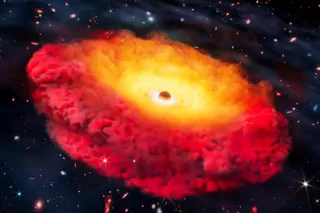This article was originally published on February 16, 2019.
Black holes have long been a source of much excitement and intrigue. And interest regarding black holes will surely grow now that gravitational waves have been discovered.
Many of the questions I am asked regard how “true” science fiction concerning black holes might be, and whether worm holes, such as those featured in Stargate, are real or not. Invariably though, the one item that is almost assured to come up are the largely gruesome ways in which black holes might theoretically affect human beings and the Earth itself.
There are three properties of a black hole that are (in principle) measurable: their mass, their spin (or angular momentum) and their overall electronic charge. Indeed, these are the only three parameters that an outside observer can ever know about since all other information about anything that goes into making up a black ...














